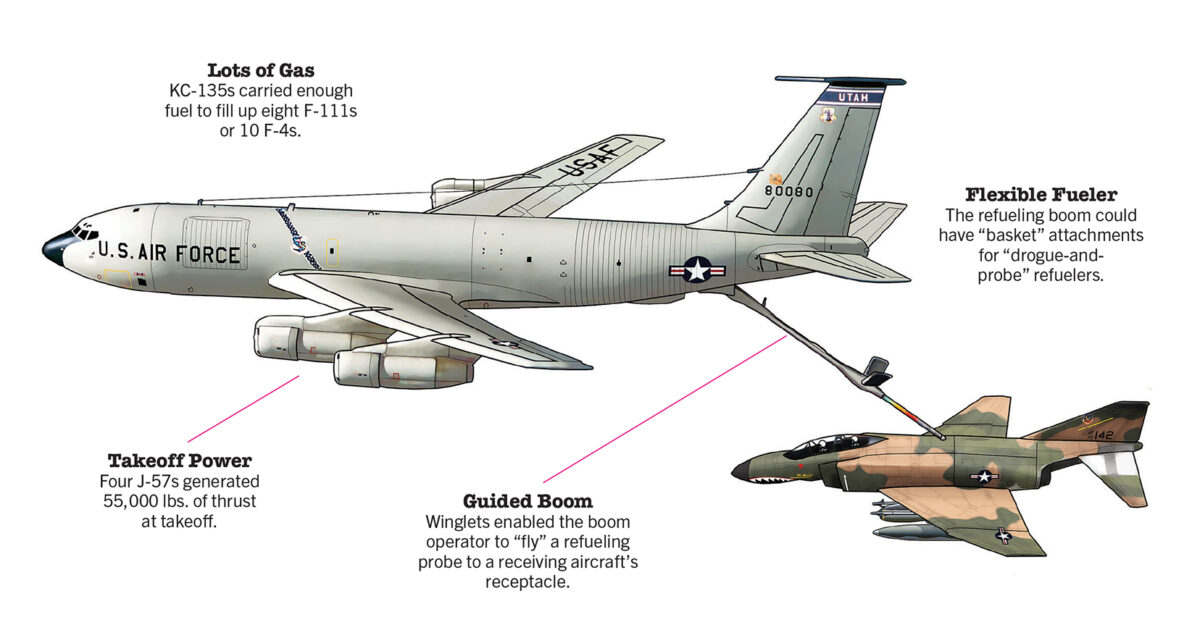
In late August 1972, a KC-135 responded to a “mayday” call from a heavily damaged F-4D Phantom rapidly losing fuel. The tanker turned toward the fighter, guided it to rendezvous, and started pumping more fuel than the Phantom was losing. The fighter landed safely 30 minutes later. That unidentified Phantom pilot was one among hundreds saved by aerial refueling during the Vietnam War. Unheralded but not unappreciated, America’s tanker crews delivered over 1.6 billion gallons of jet fuel to the attack aircraft, bombers, and fighters of the war. The U.S. Air Force’s KC-135 Stratotanker provided most of that fuel.

The KC-135 is based on the Boeing 707-80 commercial airline flight demonstrator. Boeing submitted a tanker variant as part of its bid for the Strategic Air Command’s (SAC) 1954 contract for a jet-powered aerial refueling aircraft. Although it lost the bid to Lockheed, Boeing’s mature manufacturing process, lower cost, and Lockheed’s production delays led the Air Force to order Boeing’s tanker. The first KC-135A entered service in June 1957. The last production model left the factory in 1966.
Its swept wings had four engine nacelles mounting Pratt and Whitney J-57-P-59W engines that used water injection to boost thrust during takeoff. It carried 187,500 lbs (31,250 gallons) of fuel in six wing and four fuselage tanks. The boom operator would “fly” the boom to the receiving aircraft’s fuel receptacle or probe. Its boom aft could have a special shuttlecock-shaped drogue mounted to refuel aircraft that require refueling by drogue-and-probe.
Initially intended to support only SAC operations, the KC-135 became the tanker of choice in Indochina as mission distances and Hanoi’s air defenses made in-air refueling critical to aircraft survival. Vietnam effectively became the world’s first “tanker war.” Over 100 KC-135s served in Vietnam, flying 194,687 sorties and conducting 813,878 refuelings. The KC-135 has undergone extensive avionics, communications, and engine upgrades since Vietnam. It is one of the few aircraft to pass the 60-years-of-service milestone and is expected to continue refueling America’s military aircraft through this decade.
Crew: 4Length: 136ft 3in
Wingspan: 130ft 10in
Max Takeoff Weight: 135,000kgs/ 297,600lbs
Propulsion: 4 x PW J-57-P-59W jet engines
Thrust: 4 x 13,750lbs (for takeoff)
Top Speed: 601mph/522.25kts
Cruise Speed: 552mph/
Range: 4,000miles/3,478nm
Operational Ceiling: 40,000ft
Max Fuel for Delivery: 181,000lbs/30,000gallons